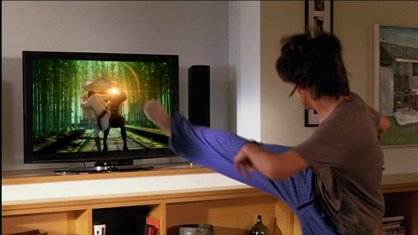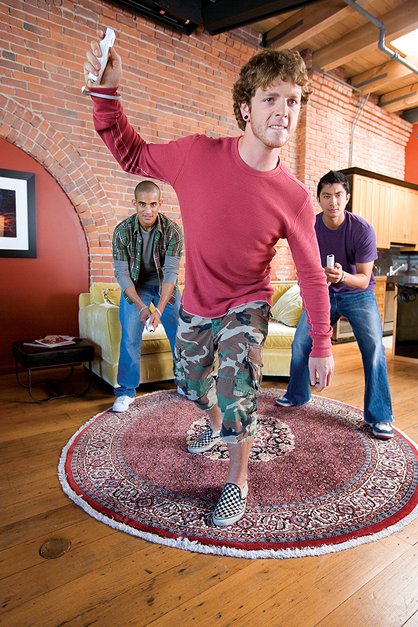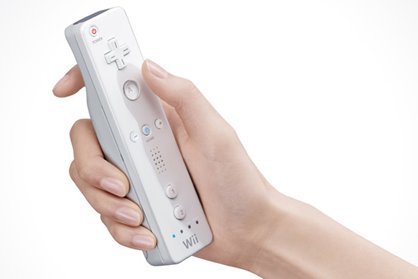Could motion control cause a game market "crash"?
How waggle may one day crumple the industry
Well, 2009’s E3 gave off a familiar, fishy whiff that crawled up my nose and wouldn’t go away. I started thinking about what happened the last time the industry started copying itself in order to lure in more casual gamers. I’m not predicting another full-on crash, but there are signs of cynical idea-filching that got my brain quivering about what I’m going to call a possible game-market “crumple.” A crumple wouldn’t be as bad as a crash, but we could see a not-to-be-sneezed-at shrinkage of the market, followed by a rethinking of the gaming business model.

Above: The next evolution in videogame controls: ripping your crotch open
The original crash showed that while hardcore gamers will always keep buying games, casual gamers will bail the minute it’s hard to tell which games are good. Hold on – don’t get your casual-gaming panties in a bejeweled ruffle. There’s nothing wrong with being a casual gamer. There’s nothing wrong with designing games for casual gamers. But things get scary when game companies create gigantic investments of manpower and money, and then perch them atop the fickle whims of casual gamers.
There has already beenevidencethat confirms what many gamers suspect: people bought the Wii in droves, but then theydon’t play it much. Now, both hardcore and casual gamers own Wiis, but they don’t play them much, probably for similar reasons: there ishard datashowing that, disc for disc, the Wii disproportionately has more critically reviled games. Remember the old Nintendo Seal of Quality, and how that meant something once? That very seal helped revive the industry after the ’83 crash by forcing some standards of craftsmanship. Yet with the Wii, Nintendo needed all the third party support it could get, so it relaxed the same standards that originally prevented junk games from taking over.
Now, the problem isn’t just that so many Wii games are crappy and that people aren’t really playing their Wiis. It’s a self-perpetuating cycle, because the Wii is special in that its audience doesn’t really care if its games are crap: they’llbuy them anyway, so long as there’s a recognizable brand or a lot of marketing muscle behind them. This in turn is training developers to believe that bad games sell well on the Wii, andgood games don’t. Even though “games” like Wii Fit sold out faster than Rage Against the Machine, Wii owners, when compared to the total number of games purchased on other systems, aren’t reallybuying a ton of games.

Above: "This tennis game will totally never get old!"
All of these trends lead back the argument I’m making: that history may indeed be doomed to repeat itself. History has shown us that if the videogame market becomes saturated with subpar titles, people, especially casual gamers who don’t read gaming magazines/websites to get informed on what’s worth buying, will give up on all games when they walk into the store and can’t tell what on the shelf is good and what isn’t. What created that confusing slop ofparty games? This:
Weekly digests, tales from the communities you love, and more

And guess who wants to join the party? The bastions of hardcore gaming, the PlayStation 3 and Xbox 360 (the PC is sort of safe, but of course, it has Farmville). Remember back when Nintendo said motion control would revolutionize gaming? It told us motion controls would make hardcore gaming more immersive. Instead, we got game after game trying to appeal to hardcore gamers, and each fell on its gritty, 480p face when no one bought it. Why? Because “serious” gamers had already moved on to the PS3 and 360.



